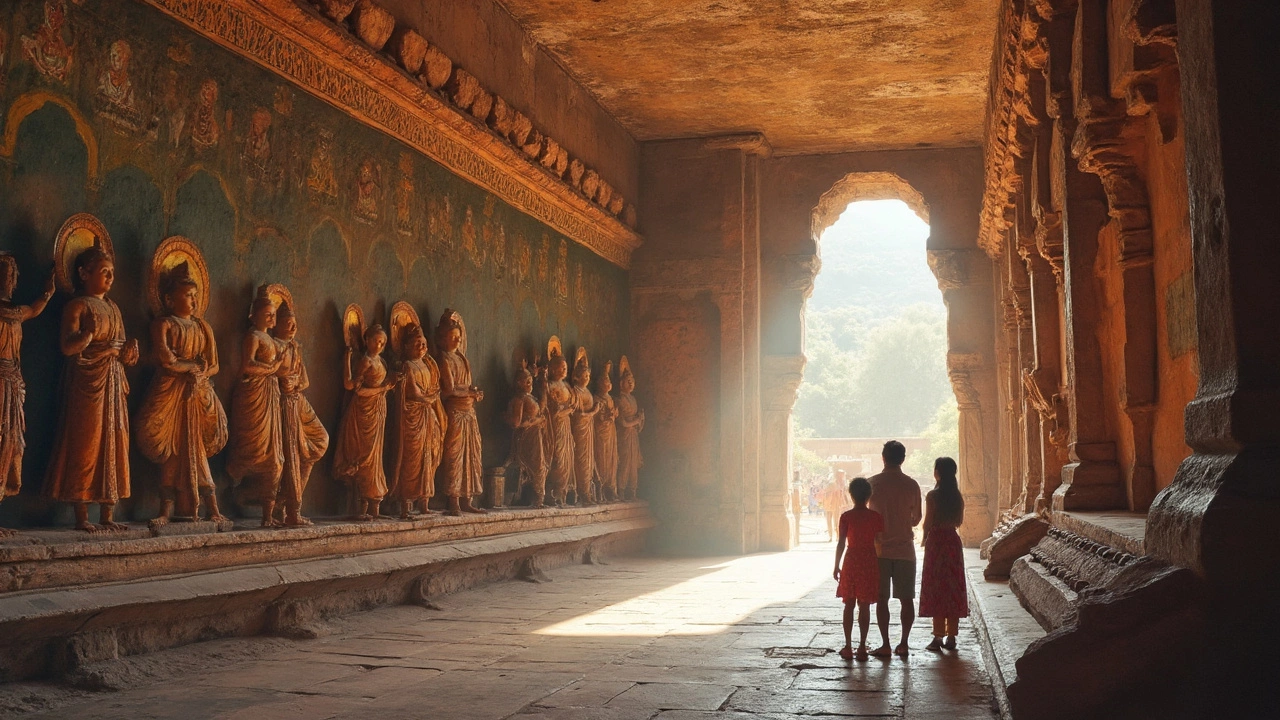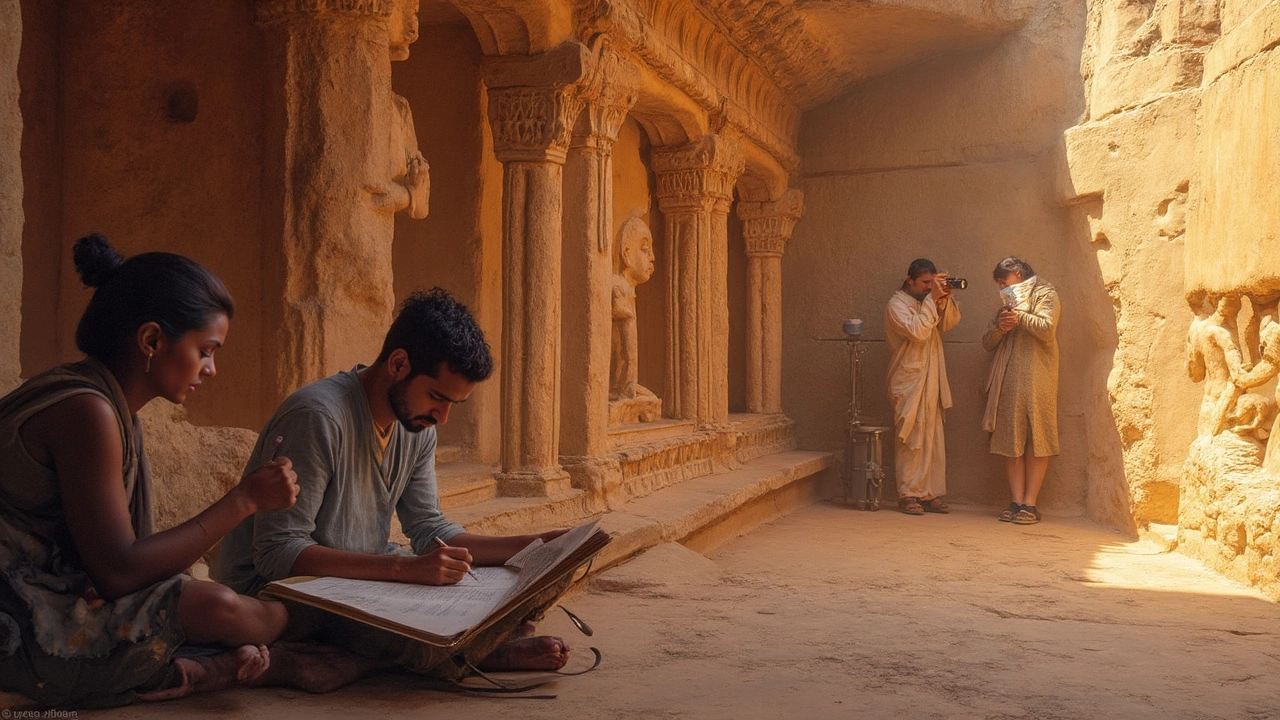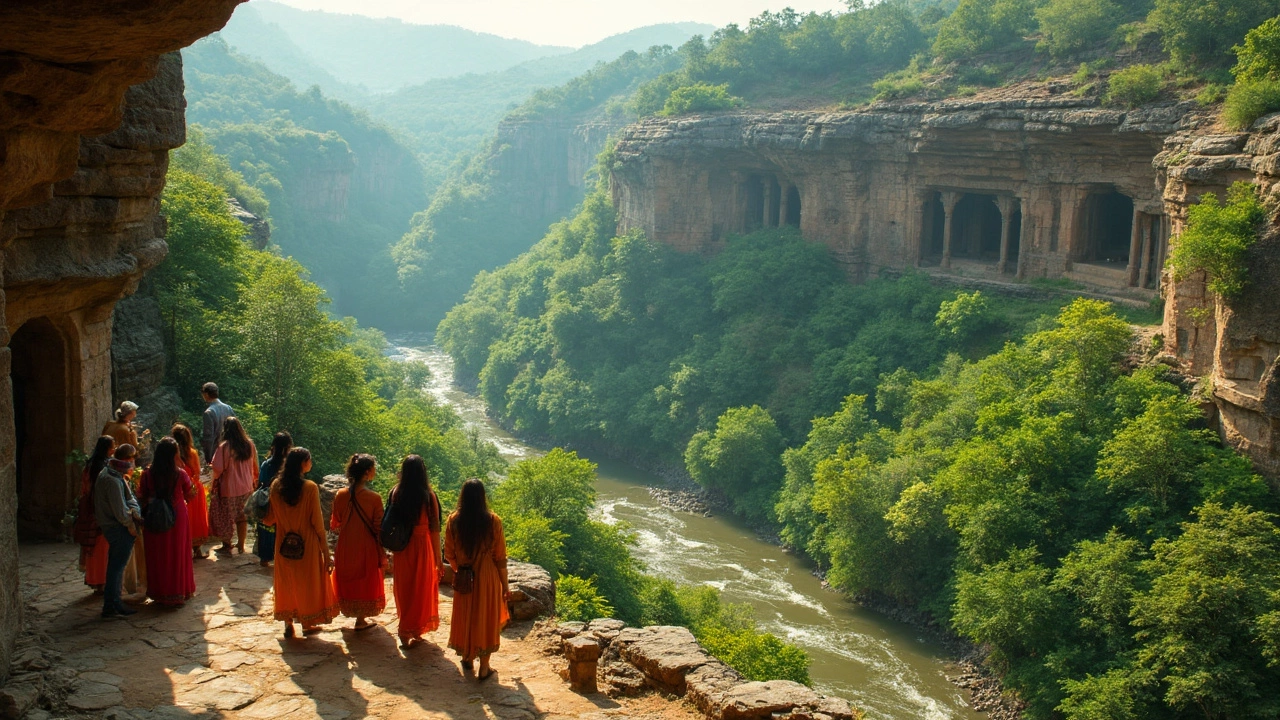What does it feel like to walk through a corridor painted over 2,000 years ago—where monks once chanted, artists painted by oil lamps, and kings gazed at the handiwork in awe? India’s first UNESCO World Heritage site packs this punch and much more. Ask anyone about heritage places in India, and most will toss out the Taj Mahal or the forts of Rajasthan. They might be surprised to learn that India’s very first entries on the UNESCO World Heritage list weren’t the marble wonder or even the mighty forts but a set of ancient rock-cut caves—Ajanta, tucked away in Maharashtra's dense Sahyadri hills. It’s not just an old site; it’s the place where India’s journey with UNESCO heritage actually began.
The Ajanta Caves: India’s Trailblazer on the UNESCO List
The year was 1983. India had been independent for decades, but when UNESCO recognized its first batch of World Heritage Sites, Ajanta Caves stood at the forefront alongside four others. Why? Walk through the caves and you’ll see immediately: these aren’t your average ruins. The Ajanta Caves contain 30 rock-cut Buddhist monuments, carved and painted between the 2nd century BCE and 6th century CE—a living gallery of devotion and artistry. The caves tell stories, not just with sculptures but with delicate murals that have survived floods, time, and generations of explorers. Unlike standalone temples, Ajanta is carved directly into a horseshoe-shaped cliff, hugging a river gorge. It’s a sight that makes even veteran travelers catch their breath.
Back in the day, monk artists (yes, that’s right, the monks were also the painters!) used crushed gemstones, vegetables, and clay—making pigment blend as smoothly onto stone as onto a canvas. The frescoes glow with scenes of the Buddha’s former lives, crowded marketplaces, royal palaces, and even elephants on parade. And researchers still marvel: how did artists, without modern tools or electricity, manage such subtlety—light and shadow, emotion, and even tricky perspectives? It feels eerily modern. No wonder, when UNESCO defined what counts as “outstanding universal value,” Ajanta ticked every box—art, history, architecture, spirituality, and, let’s be real, sheer wow factor.
When the British soldiers ‘rediscovered’ Ajanta in 1819 (after centuries of being swallowed by jungle), the colors on the murals stunned everyone. It’s hard to imagine, but the original pigments popped with hues—indigo, ochre, lime green—now faded, yet still hauntingly beautiful. Even today, conservationists use special lighting and climate controls to protect them for future generations. If you’re planning to visit, be ready for strict photography rules (no flash, ever) and a limit on how many visitors can enter at one time. After all, these aren’t just old walls—they’re precious relics of world heritage.
Is Ajanta alone? Not quite. The same year, UNESCO also inscribed Ellora Caves, Taj Mahal, Agra Fort, and Sun Temple at Konark. But among these, Ajanta gets the top spot in listing order—cementing its status as India’s very first heritage superstar. Forget Instagrammable spots: here, you step into the world’s earliest surviving Buddhist art, predating even some of China’s oldest temples.

What Makes Ajanta a World Heritage Marvel?
There are plenty of ancient sites in India, so what put Ajanta in a league of its own? It’s a mix of ingenuity, survival, and storytelling that still matters today. For starters, the physical feat is jaw-dropping. All 30 caves were hand-carved into steep basalt cliffs with rudimentary iron tools—no bulldozers, no dynamite. The work spanned generations, sometimes abandoned and resumed centuries later. Imagine being a stone mason dangling above a gorge, sketching outlines straight onto live rock, knowing you might never see the finished masterpiece.
But artistry steals the show. If you walk through the cave passages, the air is thick with history—scenes from the Jataka tales (which share the Buddha’s past lives) run across the walls: kings, dancers, musicians, animals, traders, even regular farmers. Everyone gets a spot. These paintings aren’t static—they capture movement, emotions, and sometimes humor (a monkey trying to grab a fruit, or a sneaky servant hiding a scroll). Artists mixed local lore with Buddhist teachings, baking spirituality into everyday life. The murals are also an accidental time capsule—historians pore over dress, jewelry, even extinct plants painted on the walls to learn about India’s ancient world.
If you look up, you’ll glimpse massive Buddha statues that radiate calm in the torchlight. Soft echoing chants (sometimes tourist guides humming quietly) add to the drama. Symmetry rules the architecture. Everything lines up perfectly; columns and doorways often mirror each other like reflections in water. Each cave had a purpose—some were living quarters, others gathering halls. A few held libraries or served as meditation cells for wandering monks.
There’s also the question of survival. After Ajanta was abandoned in the 7th century when Buddhism began to decline in the region, jungle growth shielded the site from invaders, looters, and even natural disasters. Ironically, centuries of silence preserved the delicate wall paintings from wind and rain. Had it stayed inhabited, there’s a chance modern repairs would have erased the ancient artistry. Today, the site is a delicate balance between letting people marvel at its wonder and making sure nothing gets damaged. Only select caves are open each day, and guards carefully monitor humidity and visitor numbers. The Indian government, with international help, uses everything from micro-climate sensors to infrared scanning to check for weaknesses in the stone or flaking paint. Cameras feed live data to conservation teams in Mumbai and Pune.
Just how popular is it? Before the pandemic, Ajanta saw nearly half a million visitors a year, including researchers from the world’s top universities. Tourism brings income—and a huge responsibility. Conservationists always remind visitors: each careless scratch or fingerprint can undo centuries of careful preservation. You can’t take souvenirs, but you leave with a memory of India’s past that you literally can’t find anywhere else.
| Fact | Details |
|---|---|
| UNESCO Inscription Year | 1983 |
| Number of Caves | 30 |
| Estimated Construction Period | 2nd century BCE to 6th century CE |
| Main Artistic Feature | Buddhist murals, sculptures |
| Annual Visitors (Pre-2020) | Approx. 450,000 |

Tips for Exploring India’s First Heritage Place Like a Pro
Seeing Ajanta isn’t like checking off a regular tourist spot. It’s a pilgrimage through time—so prep like an explorer, not just a traveler with a digital camera. Here’s how to make the most of your journey:
- Ajanta Caves are at their best during the winter months (November to March) when the weather is mild and the landscape is lush, thanks to the monsoons.
- Arrive early in the morning to avoid the crowds. The soft natural light also brings out the murals’ muted colors best. Flash photography is banned, so use your eyes to soak it all in.
- Wear comfortable walking shoes. The caves are cut into a steep cliff-face, and some uphill walking and stairs are involved.
- Hire a government-certified guide. Local guides are passionate and love sharing stories you won’t find in guidebooks—like where secret passages lead or which mural features a rare blue lotus flower.
- Carry a bottle of water and a light snack. There are facilities at the entrance, but you can’t eat or drink inside the caves. Respect the rules—food crumbs can attract insects which can harm the murals.
- Read up a little before you go. Knowing the basics of Buddhist stories (the Jataka tales) really helps you understand what’s going on in each mural.
- Map out the caves you want to see most. Not all 30 caves are open every day for preservation reasons, so check the Maharashtra Tourism website for updates.
- If you want to photograph, bring a camera with a good low-light setting (no flash!). Some of the best shots are of light slanting across the carved pillars at sunrise.
- Travel light. Backpacks have to be deposited outside the caves, so just carry essentials like your phone, ID, and wallet.
- Practice patience. Sometimes you might need to wait your turn for crowded murals, and the caves get humid quickly in summer.
Beyond Ajanta, India now has 42 UNESCO World Heritage Sites, from Humayun’s Tomb in Delhi to the Kaziranga National Park in Assam. Yet, if you’re after deep history, Ajanta remains a touchstone—the first, the oldest, and to many, still the most magical. There’s a reason UNESCO chose it as India’s opening act on the world stage. When you step into its shadowy passages, you’re not just looking at painted walls—you can almost hear the echo of chanting monks, the rasp of chisel on stone, and the timeless hum of Indian heritage coming alive around you.
